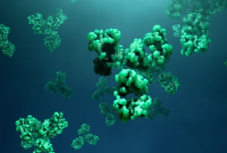
Mollusks are a diverse group that includes marine and freshwater clams and snails, oysters, squid, and octopus. Mollusks have a protein component. Proteins are organic macromolecules that are the basic organisms that make up cells and are the main bearers of life activities. Proteins play an essential role in catalyzing various reactions in life, metabolism, defense against invasion of foreign substances, and control of genetic information. The primary structure of a protein is the amino acid sequence, which is identified to match its protein. Lifeasible provides protein component analysis services for mollusks, including protein analysis support, from method development and fit-for-purpose validation to process/cleaning validation and sample analysis.
Lifeasible offers protein component analysis services for mollusks. Our available services include chemical composition analysis of molluscan tissues, amino acid composition analysis, protein composition and quantification, mass spectrometry, and data processing. Our focus is on the initial characterization of the distribution of molluscan tissue proteins and the analysis and comparison of molluscan tissue protein fractions, and the distribution of the content of each fraction.
The general chemical composition analysis included moisture, crude fat, crude protein, total sugars, and ash. The moisture content was determined by direct drying, the crude ash content was determined by burning and weighing, the crude protein content was determined by the Kjeldahl method, the crude fat content was determined by Soxhlet extraction, and the total sugar content was determined by spectrophotometric method, respectively.
The amino acid content of the samples was determined by the acid hydrolysis method. The mollusk tissues to be tested were added into the protein hydrolysis tube, sealed with nitrogen gas, and hydrolyzed in the oven, filtered by quantitative filter paper, fixed in distilled water, evaporated in a water bath under vacuum conditions, dissolved in HCl, diluted 4 times, and filtered through a filter membrane. Then the amino acid content was determined by the amino acid autoanalyzer.
Molluscan tissue samples were weighed, added 4 times the volume of NaCl-Tris-HCl buffer solution, homogenized 3 times at 30s intervals, and the above operations were performed in an ice water bath. The homogenate was taken, and proteolytic solution [containing SDS, urea, β-mercaptoethanol, and Tris-HCl] was added, mixed, and heated. The analysis was performed by SDS-PAGE. Quantitative analysis of the electrophoresis profiles was performed using MultimateGauge software.
A tandem time-of-flight mass spectrometer was used for the analysis, and the data were compared using the UniProt database.
Each experimental group was set up in three parallels, and the data were expressed as mean ± standard deviation.
The data were analyzed by one-way ANOVA with SPSS software and Duncan's new multiple difference tests for significant differences.
If you are interested in our services, or if the service you want is not listed, please feel free to contact us, and we will get back to you as soon as possible.
Lifeasible has established a one-stop service platform for plants. In addition to obtaining customized solutions for plant genetic engineering, customers can also conduct follow-up analysis and research on plants through our analysis platform. The analytical services we provide include but are not limited to the following:
STU-CRISPR System Improves Plant Genome Editing Efficiency
April 19, 2024
Application of Exosomes in Facial Beauty
April 12, 2024